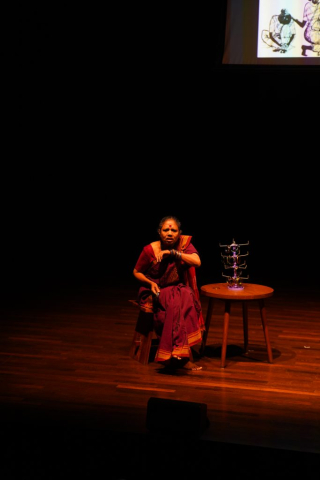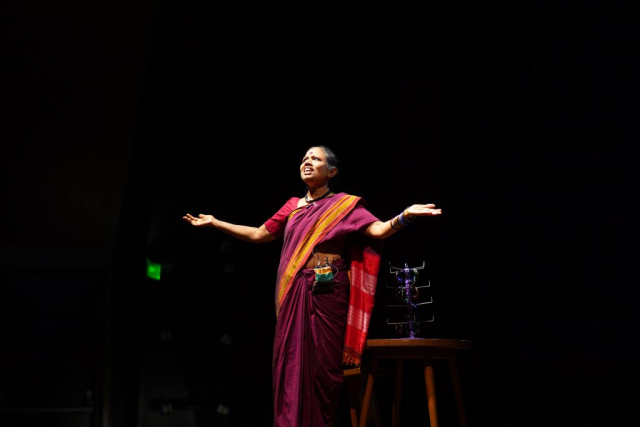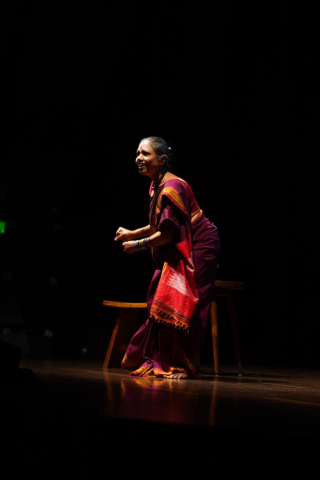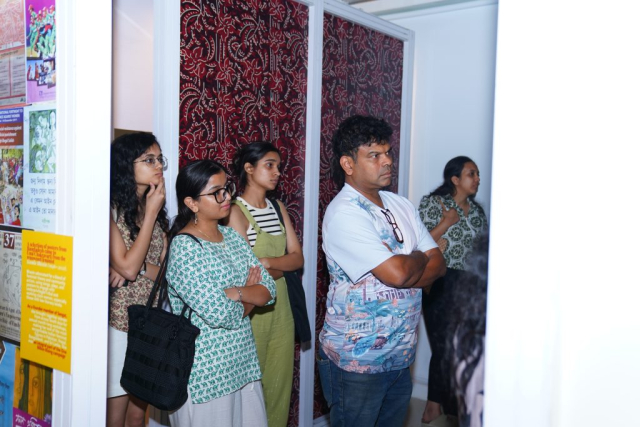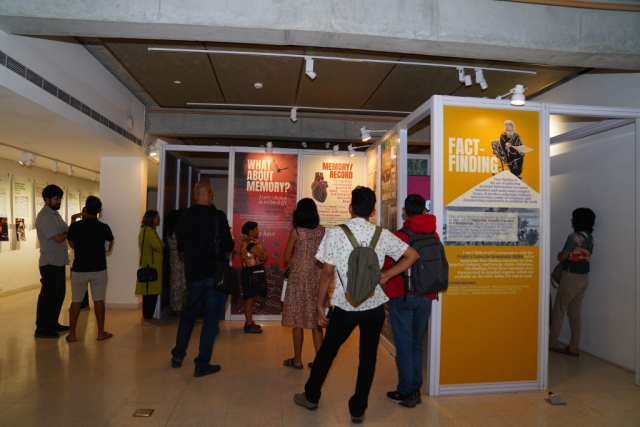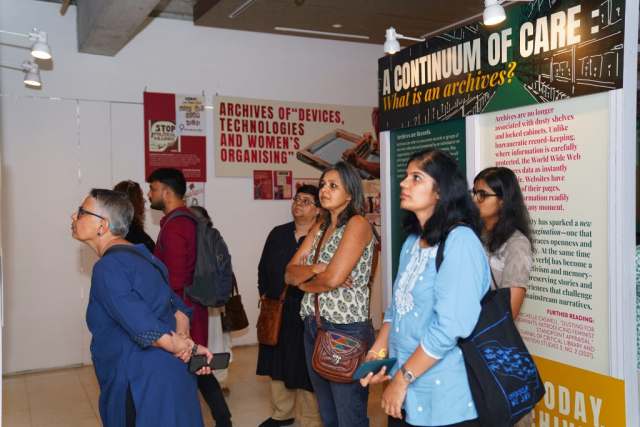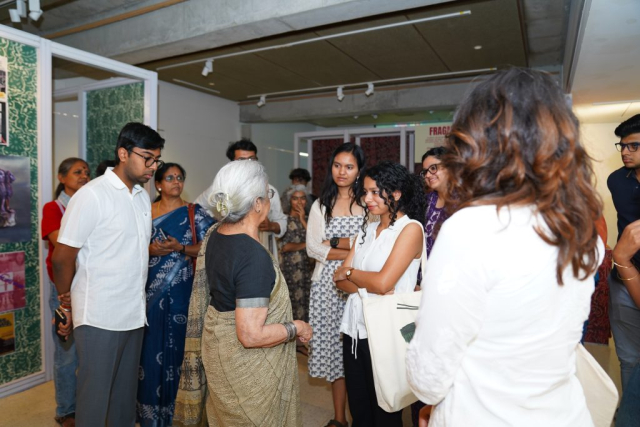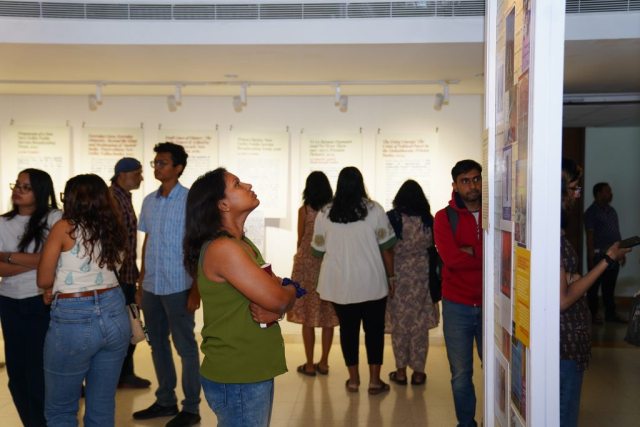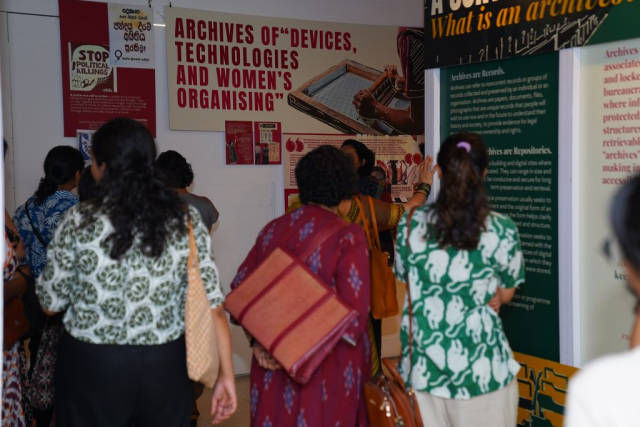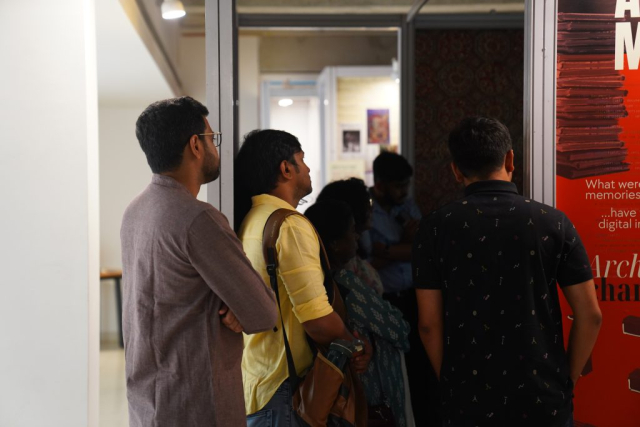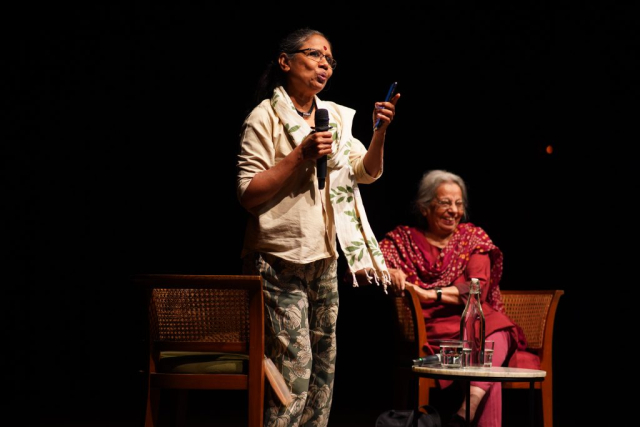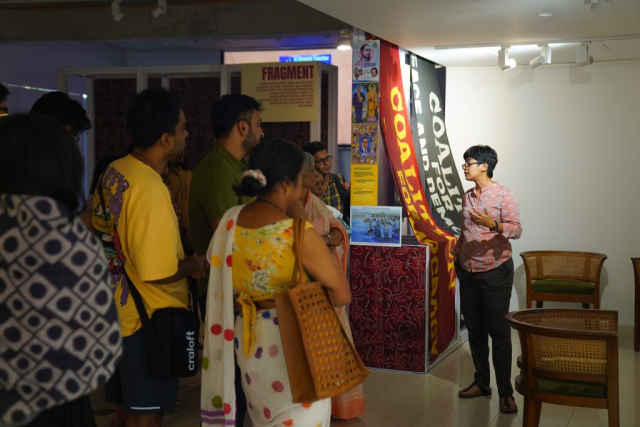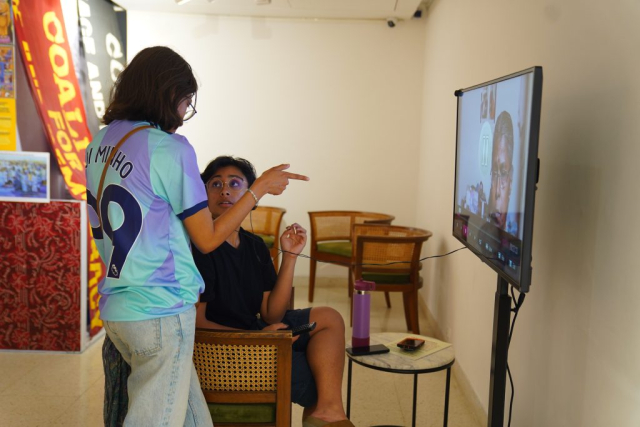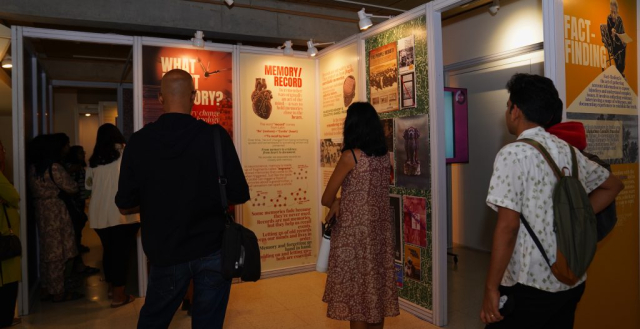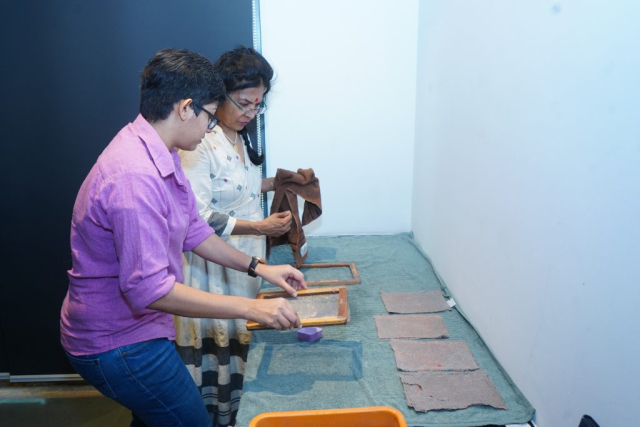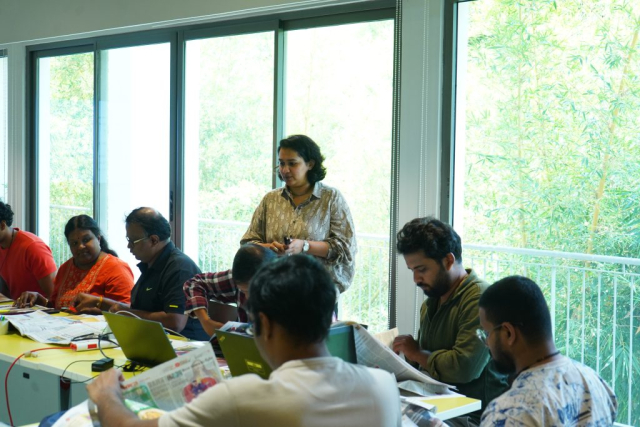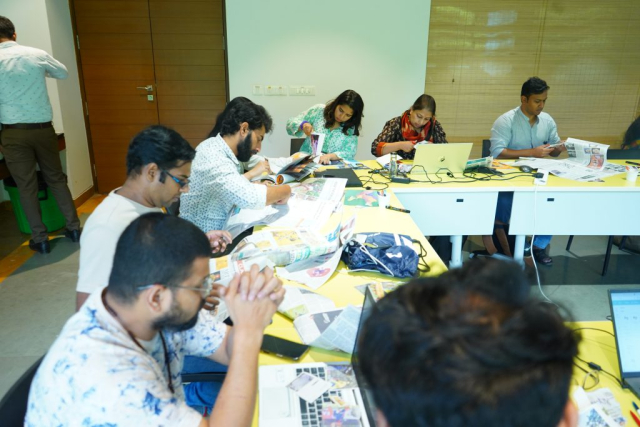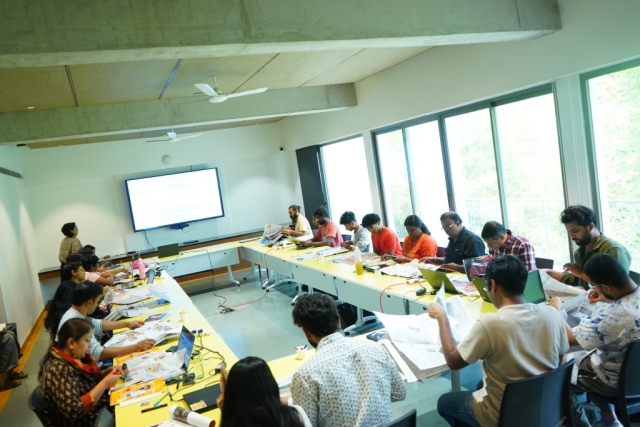Reflections from ‘Maps of Memory: Reimagining South Asian Histories through the Uma Chakravarti Collection’
April 7, 2025
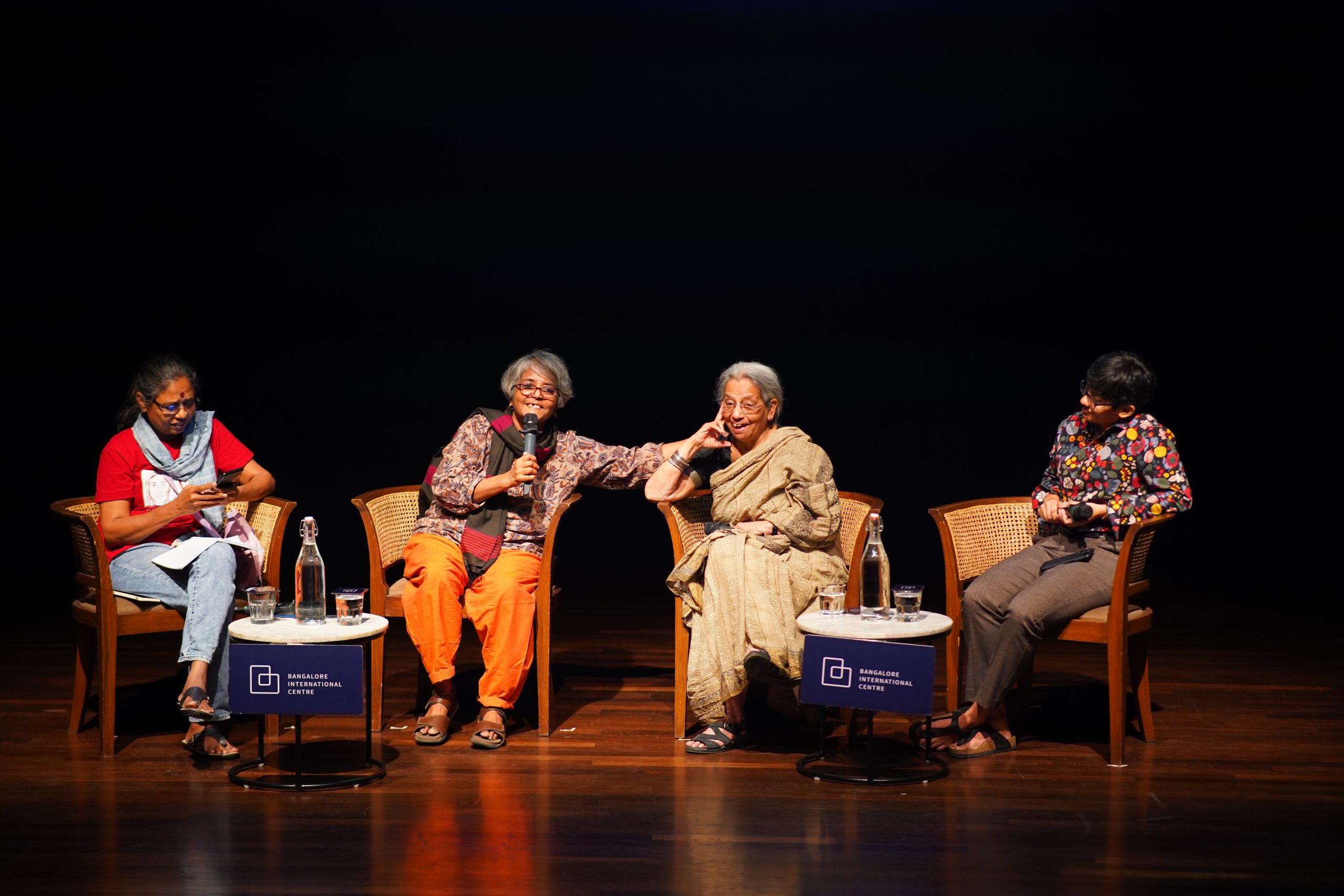 The National Law School of India University’s Law and Society Archives launched ‘Maps of Memory: The Uma Chakravarti Collection‘, a landmark exhibition that brought together feminist and democratic histories from across South Asia. Hosted at the Bangalore International Centre from March 29 to April 6, the exhibition featured archival fragments—posters, photographs, films, and documents—that traced networks of activism, solidarity, and political imagination from the mid-20th century onwards.
The National Law School of India University’s Law and Society Archives launched ‘Maps of Memory: The Uma Chakravarti Collection‘, a landmark exhibition that brought together feminist and democratic histories from across South Asia. Hosted at the Bangalore International Centre from March 29 to April 6, the exhibition featured archival fragments—posters, photographs, films, and documents—that traced networks of activism, solidarity, and political imagination from the mid-20th century onwards.
Curated by NLSIU faculty members Diya Deviah and Ammel Sharon, the exhibition drew from the personal collection of renowned historian, filmmaker and activist Dr. Uma Chakravarti. It offered a rare, multi-sited glimpse into people’s movements across India, Pakistan, Bangladesh, and Sri Lanka, exploring how feminists imagined alternative futures through acts of resistance, community, and care.
Upon entering the exhibition, visitors were met with a striking wall of haphazardly pasted and torn posters. Diya Deviah, the art director, explained: “The intention was to resist presenting the poster as a polished art object. Instead, the display highlighted the inexpensive, urgent nature of posters—designed not for permanence, but to call for action or announce an event.”
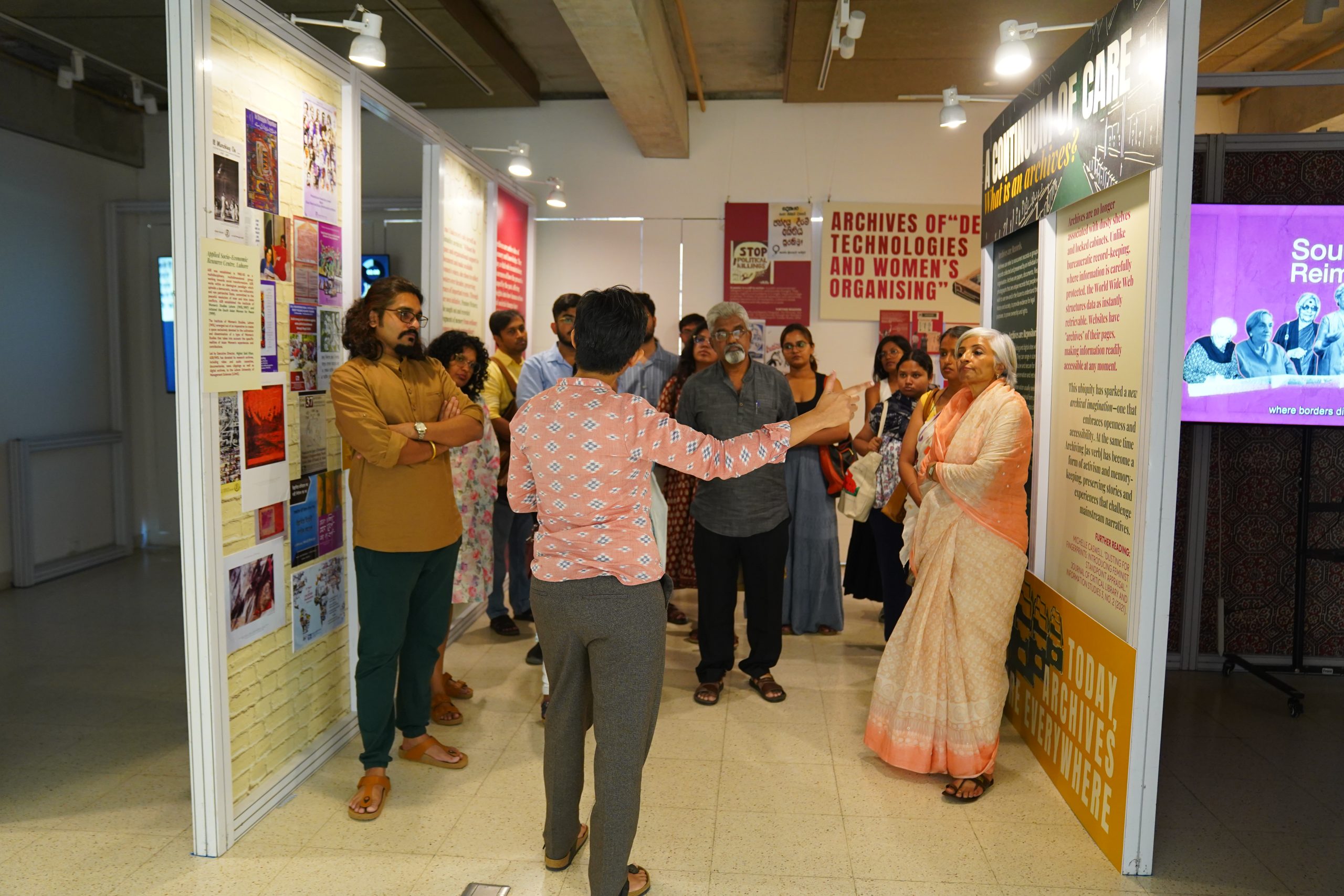 Themes
Themes
The exhibition was structured around four thematic sections: (i) Archiving Feminist Histories, (ii) Friendships Beyond Borders, (iii) Democratic Participation and Civil Liberties, and (iv) Counterpublics and the Classroom. Each theme was introduced through a video, offering viewers the curators’ interpretive lens and unpacking the layered meaning of materials on display. For instance, the section on “the classroom” presented a history curriculum designed by Chakravarti and colleagues at the Mahatma Gandhi Antarrashtriya Hindi Vishwa Vidyalaya in Wardha, where, in the absence of Hindi-language theory texts, literature and film became tools for analysing Indian social life.
The exhibition also included interpretive panels on the relationship between memory, material records, and insights from neuroscience, inviting visitors to consider the question: When and how does memory become history? It distinguished archives from collections, emphasising that archives are not just physical or digital storage spaces, but institutions governed by curatorial vision, public access policies, and historical responsibility.
Challenging notions of archiving
In this spirit, the curators challenged conventional notions of archiving. “We don’t see archives as dusty repositories for specialists,” say the curators. “In a post-truth era, archiving becomes a public question—about what counts as fact, whose stories are remembered, and how histories are constructed.” The exhibition traced the evolution of the “fact” from 16th-century bookkeeping practices to its transformation into “data” through market surveys and statistics in the 20th century. In the current age—where emotion often overrides evidence—the idea of the objective fact is under renewed scrutiny. This theme comes alive through materials like fact-finding reports from the People’s Union for Democratic Rights, including those authored by Chakravarti, which remain powerful records of human rights violations and documentation.
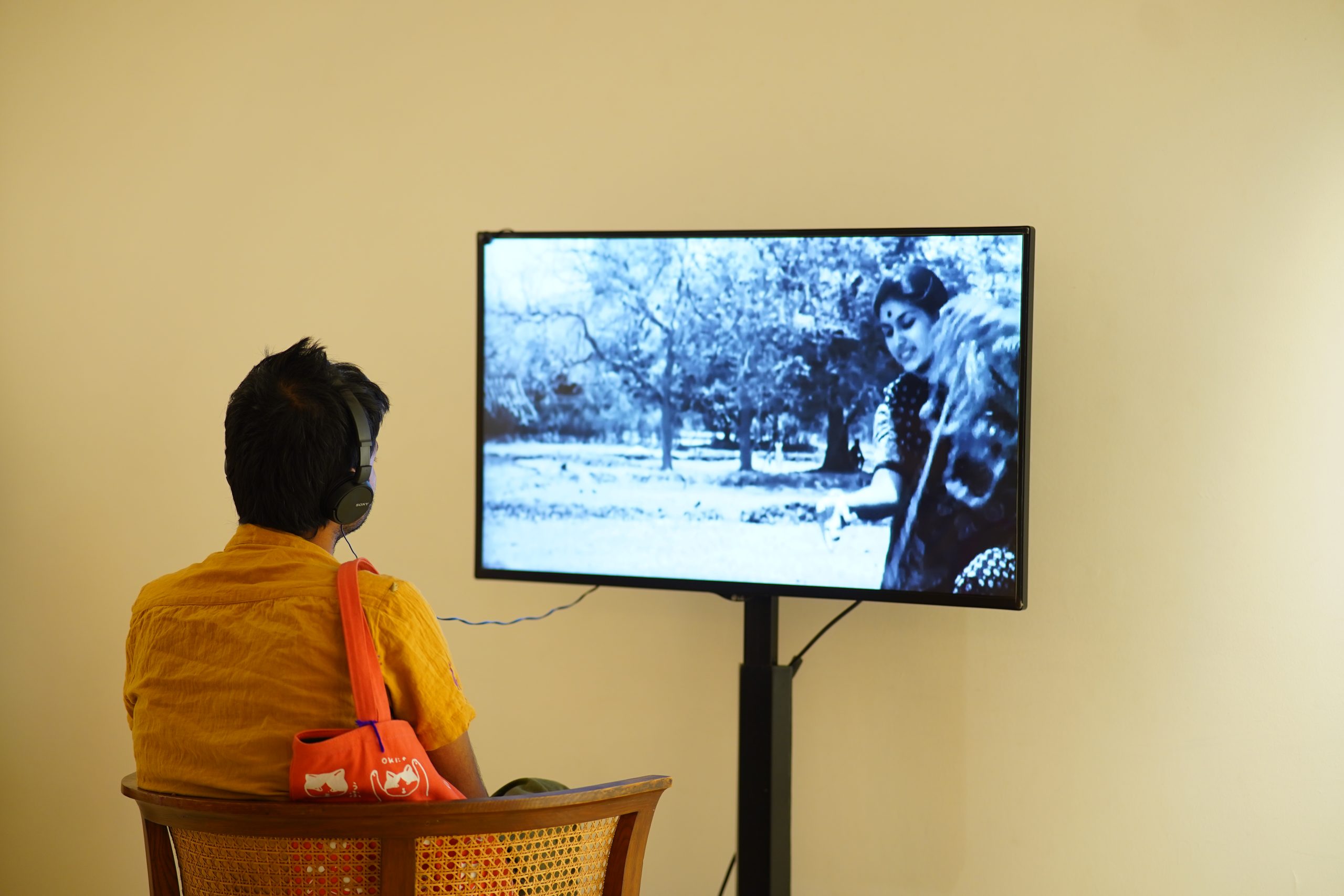 Maps of Memory reimagined archives as living spaces of interpretation and storytelling. It invited audiences to reflect not only on the past but also on the act of remembering itself—and the forms that justice, friendship, and solidarity can take in our present.
Maps of Memory reimagined archives as living spaces of interpretation and storytelling. It invited audiences to reflect not only on the past but also on the act of remembering itself—and the forms that justice, friendship, and solidarity can take in our present.
Sessions
As part of the week-long event, the curators hosted four workshops on inclusive archiving and digital poster design.
The exhibition opened with a panel discussion featuring Dr. Uma Chakravarti, historian and publisher V. Geetha, and theatre performer, poet, and activist Du Saraswathi. V. Geetha reflected on the fragmented and complex nature of women’s movement histories, noting that “women don’t speak in one voice.” She highlighted Bengaluru’s unique role in shaping feminist discourse, particularly through the alliances and friendships that emerged between Dalit, feminist, and left-democratic activists. The exhibition also featured a performance by Du Saraswathi titled Pakshi Purana—a reflection on masculinity and a call to notice the tenderness and care birds show one another.
Of particular interest to Bengaluru audiences was the inclusion of a newsletter from the city-based women’s organisation Vimochana, whose visuals were later borrowed by Sri Lankan activists for their own publications. Also featured was a moving testimony by Nandana Reddy, who recounted the imprisonment of her mother, Snehalata Reddy, the acclaimed actor from the film Samskara, who died while on parole after being held in solitary confinement during the Emergency.
The exhibition drew a large and diverse public audience, from students, scholars, and lawyers to journalists, filmmakers, and performers. Some of our attendees included Vrinda Grover (lawyer), Janaki Nair (scholar and author), AR Vasavi (anthropologist), Mary John (scholar), Deepa Dhanraj (filmmaker), Lakshmi Murthy (performer), and Maya Krishna Rao (performer), among many others. In addition, there were several guided walk-throughs scheduled during the weekend.
In the Media:
- PTI | NLSIU exhibition portrays South Asian histories through “Uma Chakravarti Collection”
- The Hindu | Exhibition on feminist, democratic histories at BIC
- New Indian Express | A Journey Through Time





